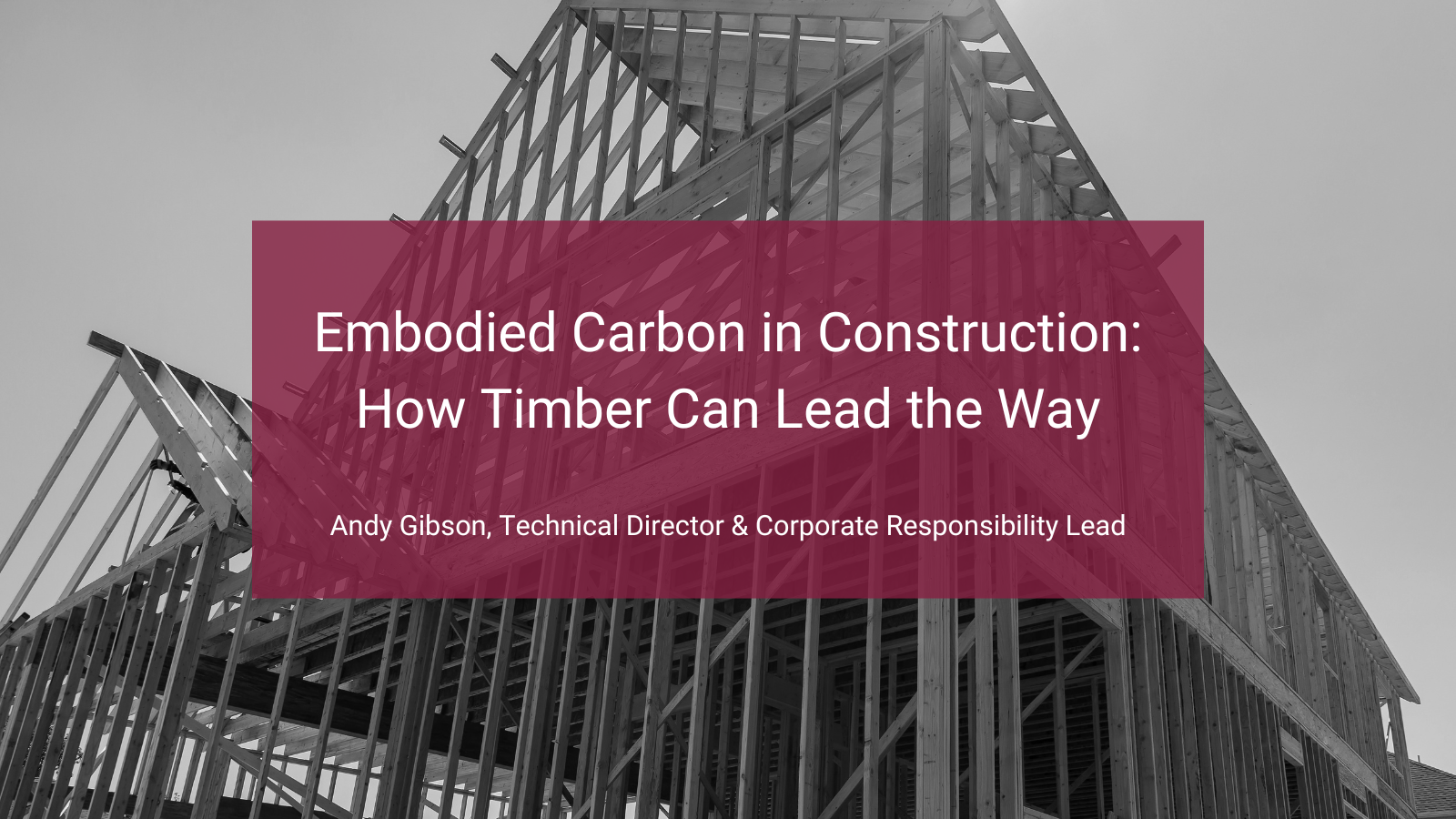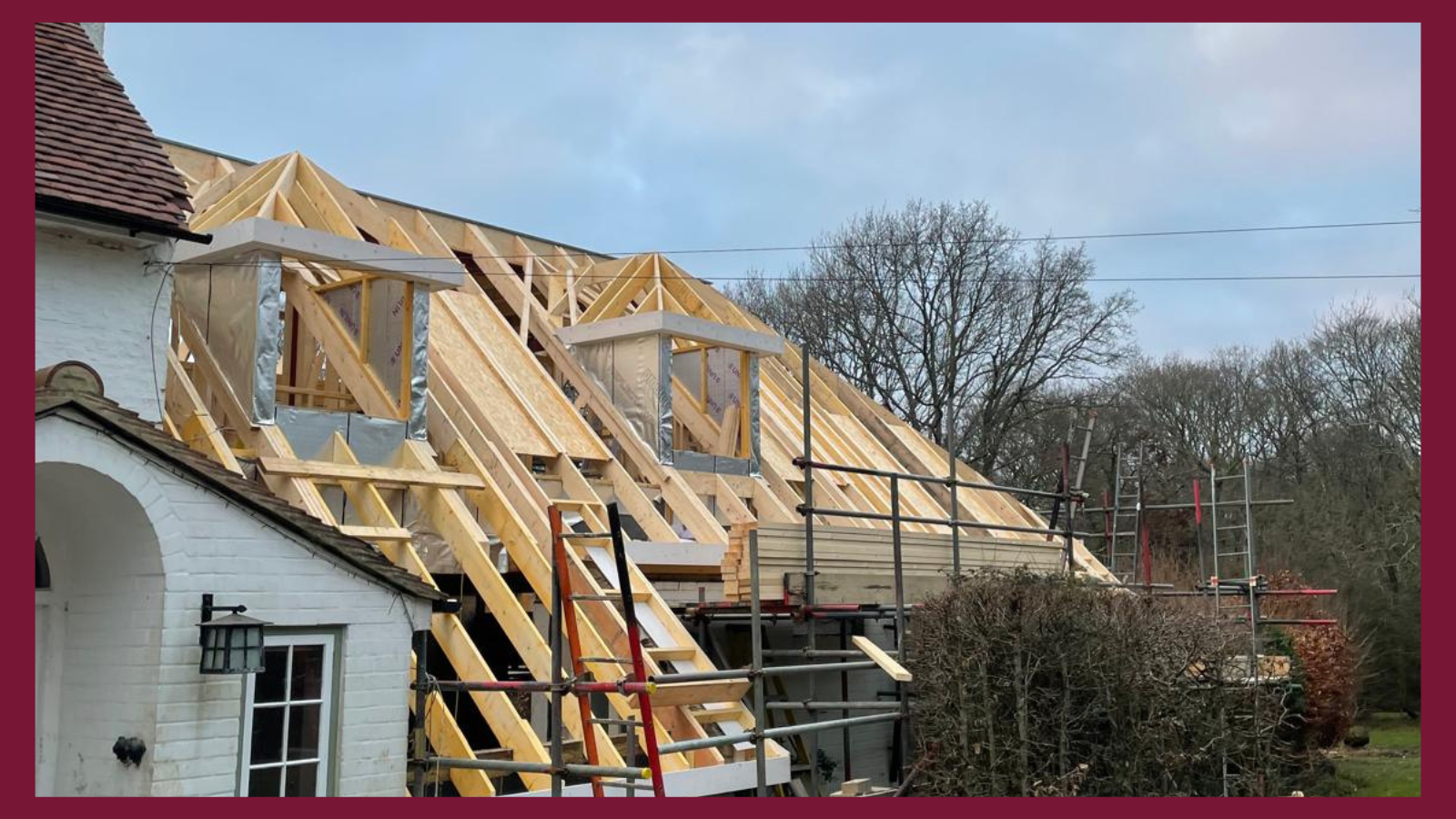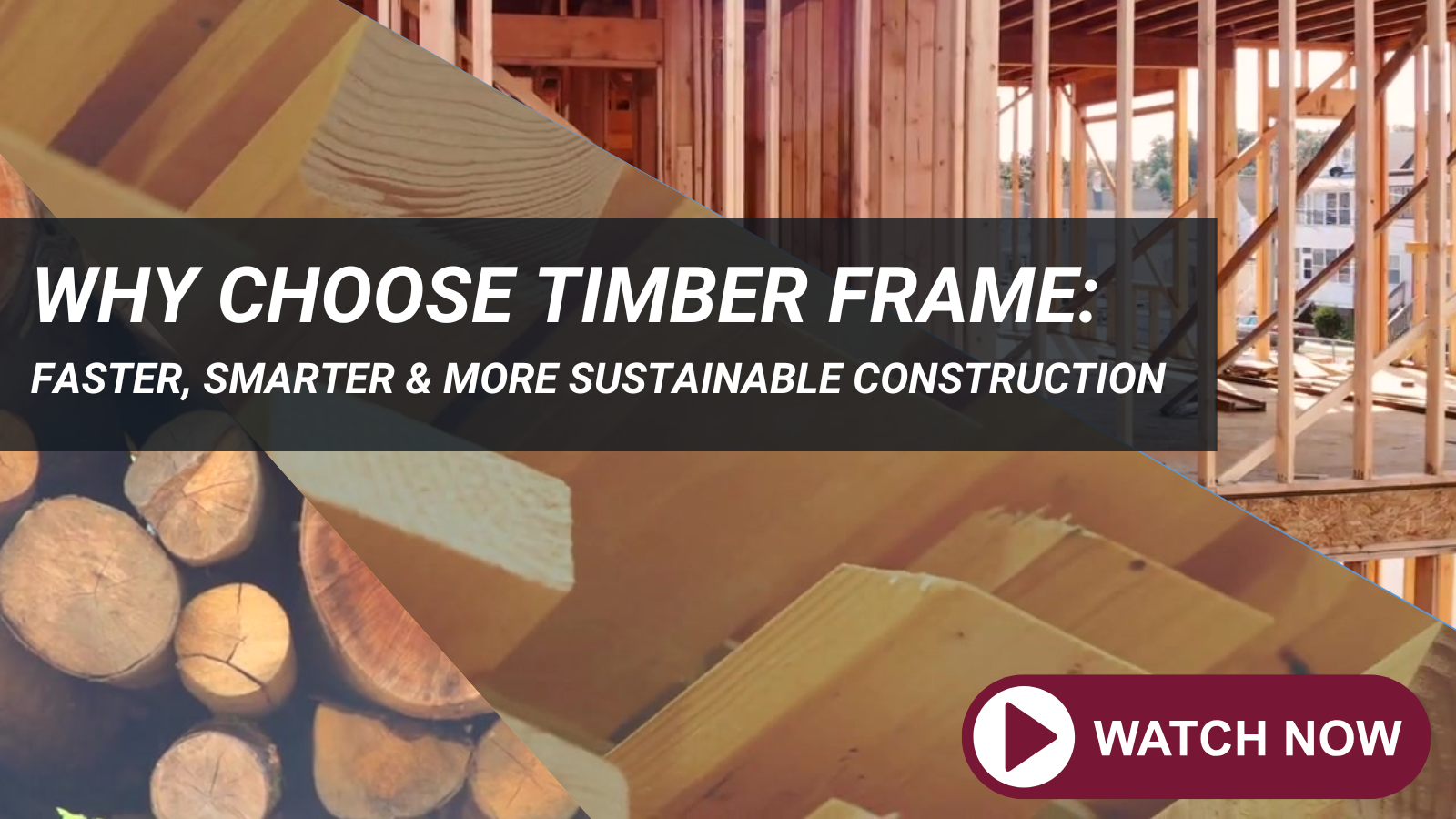Embodied Carbon in Construction: How Timber Can Lead the Way

The built environment accounts for about 25% of the UK’s total greenhouse gas emissions, making the reduction of these emissions a government priority to achieve the UK’s net zero target.
Reducing embodied carbon, which includes the immediate environmental impact of construction materials and processes, is crucial as it represents a significant part of a building’s carbon footprint from the outset. The UK Government’s Timber in construction roadmap emphasises the increased use of timber products in construction to support progress toward this target.
Housebuilders have a pivotal role in reducing embodied carbon by embracing timber, leveraging industry expertise, and advocating for supportive regulations. Proactive builders who adopt sustainable practices will not only meet evolving standards but also excel in a greener market.
We’ve put together a quick guide to help house builders understand embodied carbon and the role of timber in reducing it, alongside how Merronbrook can support efforts to lower the environmental impact of construction projects.

Embodied carbon refers to the total greenhouse gas emissions from the extraction, manufacturing, transportation, and construction of building materials, capturing a building’s carbon footprint until completion. Whole life carbon includes both embodied carbon and operational carbon, which encompasses emissions from energy use during the building’s operation, maintenance, and eventual demolition.
Unlike operational carbon, embodied carbon is fixed once construction is complete, making its reduction crucial for lowering the immediate environmental impact. Understanding and addressing both embodied and whole life carbon is essential for comprehensive sustainable construction, ensuring buildings minimise their environmental impact from inception to end-of-life.

Timber stands out as a sustainable building material due to its ability to sequester carbon during its growth. As the Timber in construction roadmap describes, “at the individual building level, carbon storage is approximately 50% higher in timber framed homes than in masonry homes and can be up to 400% higher for larger buildings that use engineered timber products such as Cross-Laminated Timber (CLT) instead of concrete.”
Here are some reasons why timber is a superior choice for reducing embodied carbon in construction:
-
1. Carbon Sequestration: Trees absorb CO2 from the atmosphere as they grow, storing carbon in their wood. This makes timber a carbon-negative material until it is processed.
2. Renewability: Timber is a renewable resource, especially when sourced from sustainably managed forests.
3. Energy Efficiency: The production and processing of timber require significantly less energy compared to other building materials like steel and concrete.
4. End-of-Life Benefits: Timber can be repurposed or recycled, further minimising its carbon footprint.
Download Timber Development UK (TDUK)’s guide to learn more about Timber and Embodied Carbon

We offer comprehensive support to help you understand and reduce the embodied carbon in your construction projects. Here’s how we can assist:
1. Technical Expertise and Data Provision:
-
Embodied Carbon Assessment: We can direct your assessors to the TDUK work on embodied carbon in imported timber
stocks, including the chart of carbon data is here: Embodied Carbon assessment data. Work is underway to provide material- and product-level Environmental Product Declarations (EPDs) for timber frame systems built to the STA Pattern Book, by Structural Timber Association (STA) members like Merronbrook. Be sure to look out for the STA Gold Assure badge, to be reassured of the highest standards of technical competency, and quality.
-
Material Specifications: We provide detailed specifications for timber frame walls, floors, internal partitions, and roofs. For example, a typical timber frame wall with a 0.15 U-value includes components like plasterboard lining, insulation, vapor control layers, and more, optimised to reduce embodied carbon.
2. Modelling and Quantification:
-
BIM support: We can perform typical material-quantity modelling using Revit to provide accurate data on timber and other materials used in your projects. This helps in precise calculation and comparison of embodied carbon against traditional building methods.
-
Comparative Assessments: We urge comparative assessments be based on achieving similar wall U-values to ensure fair and accurate comparisons with masonry and other traditional building methods. Merronbrook are always happy to help you understand the various performances of products you’re being offered, honestly and without bias.
3. Industry Collaboration and Advocacy:
-
Future Homes Hub: As active participants in the Future Homes Hub, we contribute to shaping policies and standards that promote sustainable building practices.
Legislative Preparedness: We are well-prepared for the upcoming regulatory frameworks, such as the proposed Part Z of the approved documents, which may mandate the declaration of embodied carbon in construction projects. We aim to help clients navigate and comply with these regulations effectively.

Choosing Merronbrook means partnering with a company that takes sustainability seriously and is at the forefront of reducing embodied carbon in construction. We are confident that our expertise, data-driven approach, and commitment to quality make us the ideal partner for your sustainable building projects.
Sustainability is a core part of our strategy. Over the years, we’ve dedicated ourselves to taking a leadership position in sustainability actions, preparing technically for the legislative environment that supports low-carbon construction and a Net Zero future.
Here’s a glimpse of what sets us apart:
-
• Carbon Footprint Management: We measure and offset our carbon footprint annually, using this data to drive business decisions and invest in low-carbon technologies.
• Industry Leadership: We are the only timber frame (TF) manufacturer who are paid-up Associate Members of the Future Homes Hub. Our involvement includes participation in the ‘Fabric’ Implementation Working Group, which provides insights to the government on barriers to success in the implementation of the Future Homes Standard beyond 2025.
• Expertise in Sustainability: Our Technical Director, Andy Gibson, is pursuing a Masters in Sustainability Leadership from the University of Cambridge, with a dissertation focused on timber’s use in construction. This academic commitment enhances our technical knowledge and positions us as thought leaders in the industry.

Merronbrook is committed to leading sustainable building practices. Our expertise in reducing embodied carbon through the use of timber, combined with our proactive approach to regulatory compliance and quality assurance, positions us as a valuable partner for clients aiming to build sustainably.
We can support your embodied carbon assessments providing detailed data, technical support, and insights into best practices, demonstrating timber’s superiority over traditional masonry in terms of embodied carbon.
By choosing Merronbrook, you partner with a company dedicated to sustainability and helping you achieve your environmental goals. Let’s collaborate to build a greener, more sustainable future.


